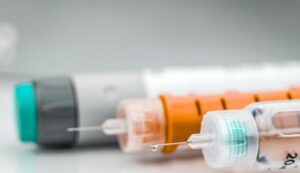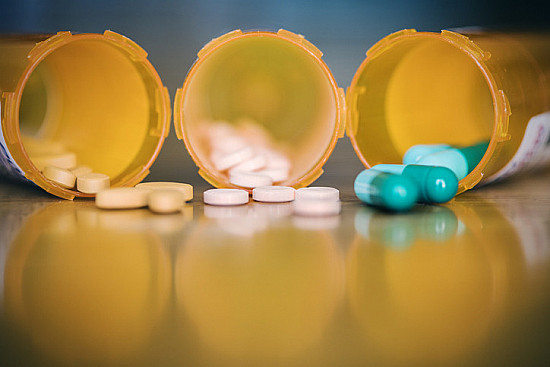Managing blood sugar levels is crucial for individuals with diabetes, whether it be type 1, type 2, or gestational diabetes. While lifestyle changes such as diet and exercise play a pivotal role, many individuals require medications to help regulate their blood sugar levels effectively. In this comprehensive guide, we’ll delve into various blood sugar medications, their mechanisms of action, potential side effects, and considerations for choosing the right medication regimen.
What is Blood Sugar Regulation?

Blood sugar regulation, also known as glucose homeostasis, refers to the process by which the body maintains stable blood sugar levels within a narrow range. Glucose, a simple sugar, serves as the primary source of energy for cells throughout the body, particularly in the brain. Therefore, it is essential for overall health and proper functioning.
The regulation of blood sugar involves a complex interplay of hormones, organs, and metabolic processes. The key players in this regulation include:
- Pancreas: The pancreas is a crucial organ involved in blood sugar regulation. It produces hormones such as insulin and glucagon, which work together to maintain blood sugar balance.
- Insulin: Insulin is a hormone secreted by the beta cells of the pancreas in response to rising blood sugar levels, typically after a meal. Its primary role is to facilitate the uptake of glucose from the bloodstream into cells, where it can be used for energy or stored for future use. Insulin helps lower blood sugar levels by promoting the absorption of glucose into muscle, fat, and liver cells.
- Glucagon: Glucagon is another pancreatic hormone, produced by alpha cells, with the opposite effect of insulin. When blood sugar levels drop, such as during fasting or between meals, glucagon is released to stimulate the liver to release stored glucose into the bloodstream, thereby raising blood sugar levels.
- Liver: The liver plays a critical role in blood sugar regulation by storing glucose in the form of glycogen and releasing it into the bloodstream as needed. It responds to hormonal signals from insulin and glucagon to regulate glucose production and release.
Types of Blood Sugar Regulation Medications
Blood sugar medications can be categorized into several classes, each with its unique mechanism of action. These include:
Insulin

Insulin is a crucial medication for individuals with type 1 diabetes and some with type 2 diabetes who cannot produce sufficient insulin on their own. It is administered via injection or insulin pump and comes in various formulations, including rapid-acting, short-acting, intermediate-acting, and long-acting insulin.
Mechanism of Action: Insulin works by facilitating the uptake of glucose into cells from the bloodstream, thereby lowering blood sugar levels. It promotes the storage of glucose as glycogen in the liver and muscles, inhibits the production of glucose by the liver, and enhances the utilization of glucose by peripheral tissues.
Types of Insulin:
- Rapid-acting insulin: Examples include insulin lispro, insulin aspart, and insulin glulisine. They have a quick onset of action, typically within 15 minutes, and peak in about 1-2 hours.
- Short-acting insulin: Regular insulin is a short-acting insulin with an onset of action of 30 minutes to 1 hour and peaks in 2-3 hours.
- Intermediate-acting insulin: NPH insulin (neutral protamine Hagedorn) is an intermediate-acting insulin with an onset of action of 1-2 hours and peaks in 4-12 hours.
- Long-acting insulin: Examples include insulin glargine, insulin detemir, and insulin degludec. They provide basal insulin coverage and have a more prolonged duration of action, typically lasting up to 24 hours.
Side Effects and Considerations: Common side effects of insulin include hypoglycemia (low blood sugar), weight gain, injection site reactions, and allergic reactions. It is essential to monitor blood sugar levels regularly and adjust insulin doses as needed to prevent hypoglycemia or hyperglycemia. Insulin therapy requires careful titration and adherence to injection techniques to ensure optimal blood sugar control.
Metformin

Metformin is a first-line oral medication for the treatment of type 2 diabetes. It belongs to the biguanide class of drugs and is available in immediate-release and extended-release formulations.
Mechanism of Action: Metformin works primarily by reducing glucose production in the liver and improving insulin sensitivity in peripheral tissues such as muscle and fat. It also enhances glucose uptake by cells and reduces the absorption of glucose from the gastrointestinal tract.
Benefits and Efficacy: Metformin is known for its efficacy in lowering blood sugar levels, improving insulin sensitivity, and reducing the risk of cardiovascular events in people with type 2 diabetes. It is often prescribed as monotherapy or in combination with other oral antidiabetic medications or insulin.
Side Effects and Considerations: Common side effects of metformin include gastrointestinal symptoms such as diarrhea, nausea, and abdominal discomfort. These side effects can often be minimized by taking the medication with meals or starting with a low dose and gradually increasing it over time. Rare but serious side effects include lactic acidosis, a potentially life-threatening condition characterized by elevated levels of lactic acid in the bloodstream. Metformin is contraindicated in individuals with severe kidney impairment, liver disease, or conditions that may predispose to lactic acidosis.
Sulfonylureas
Sulfonylureas are a class of oral antidiabetic medications that stimulate insulin secretion from the beta cells of the pancreas.
Mechanism of Action: Sulfonylureas work by binding to specific receptors on the beta cells of the pancreas, leading to the release of insulin. They enhance insulin secretion in response to glucose, thereby lowering blood sugar levels.
Types and Examples: Common sulfonylureas include glyburide, glipizide, and glimepiride. These medications vary in their potency, duration of action, and dosing frequency.
Benefits and Efficacy: Sulfonylureas are effective in lowering blood sugar levels and are often used as second-line therapy in type 2 diabetes when lifestyle modifications and metformin alone are insufficient to achieve glycemic control. They can be used as monotherapy or in combination with other antidiabetic medications.
Side Effects and Considerations: Common side effects of sulfonylureas include hypoglycemia (low blood sugar), weight gain, and gastrointestinal symptoms such as nausea and diarrhea. These medications should be used with caution in older adults and individuals with impaired kidney or liver function, as they may be more prone to hypoglycemia. Sulfonylureas are contraindicated in individuals with a history of sulfa allergy or type 1 diabetes.
DPP-4 Inhibitors
DPP-4 inhibitors, also known as gliptins, are a class of oral antidiabetic medications that work by inhibiting the enzyme dipeptidyl peptidase-4 (DPP-4).
Mechanism of Action: DPP-4 inhibitors prolong the activity of incretin hormones such as glucagon-like peptide-1 (GLP-1) and glucose-dependent insulinotropic peptide (GIP). These hormones stimulate insulin secretion and inhibit glucagon release in a glucose-dependent manner, thereby lowering blood sugar levels.
Examples and Formulations: Common DPP-4 inhibitors include sitagliptin, saxagliptin, linagliptin, and alogliptin. They are available as oral tablets and are typically taken once daily, with or without food.
Benefits and Efficacy: DPP-4 inhibitors are effective in lowering blood sugar levels and have a low risk of hypoglycemia when used as monotherapy or in combination with other antidiabetic medications. They are well-tolerated and may have additional benefits such as weight neutrality and preservation of beta-cell function.
Side Effects and Considerations: Common side effects of DPP-4 inhibitors include nasopharyngitis (inflammation of the nose and throat), upper respiratory tract infections, headache, and gastrointestinal symptoms such as nausea and diarrhea. These medications are generally safe and well-tolerated but should be used with caution in individuals with a history of pancreatitis or severe kidney impairment. They may require dose adjustment in individuals with moderate to severe renal dysfunction.
SGLT2 Inhibitors

SGLT2 inhibitors are a class of oral antidiabetic medications that work by inhibiting the sodium-glucose cotransporter 2 (SGLT2) in the kidneys.
Mechanism of Action: SGLT2 inhibitors reduce glucose reabsorption in the kidneys, leading to increased urinary glucose excretion and lower blood sugar levels. They act independently of insulin and are not associated with an increased risk of hypoglycemia.
Examples and Formulations: Common SGLT2 inhibitors include canagliflozin, dapagliflozin, and empagliflozin. They are available as oral tablets and are typically taken once daily, with or without food.
Benefits and Efficacy: SGLT2 inhibitors are effective in lowering blood sugar levels, reducing body weight, and lowering blood pressure in people with type 2 diabetes. They have been shown to provide cardiovascular and renal benefits and may reduce the risk of heart failure and kidney disease progression.
Side Effects and Considerations: Common side effects of SGLT2 inhibitors include genital yeast infections, urinary tract infections, increased urination, and dehydration. Rare but serious side effects include ketoacidosis, a potentially life-threatening condition characterized by high levels of ketones in the blood. SGLT2 inhibitors should be used with caution in individuals with a history of genital infections, urinary tract infections, or volume depletion. They may require dose adjustment in individuals with moderate to severe renal impairment.
GLP-1 Receptor Agonists
GLP-1 receptor agonists, also known as incretin mimetics, are a class of injectable antidiabetic medications that mimic the action of the endogenous incretin hormone glucagon-like peptide-1 (GLP-1).
Mechanism of Action: GLP-1 receptor agonists bind to and activate GLP-1 receptors in pancreatic beta cells, leading to increased insulin secretion in a glucose-dependent manner. They also suppress glucagon secretion, slow gastric emptying, and promote satiety, thereby lowering blood sugar levels and reducing appetite.
Examples and Formulations: Common GLP-1 receptor agonists include liraglutide, dulaglutide, exenatide, and semaglutide. They are available as injectable formulations and are typically administered once weekly or once daily, depending on the specific medication.
Benefits and Efficacy: GLP-1 receptor agonists are effective in lowering blood sugar levels, promoting weight loss, and reducing cardiovascular risk in people with type 2 diabetes. They have been shown to improve glycemic control, reduce A1C levels, and lower the risk of cardiovascular events such as heart attack and stroke.
Side Effects and Considerations: Common side effects of GLP-1 receptor agonists include nausea, vomiting, diarrhea, and injection site reactions. These side effects are usually mild to moderate in severity and tend to improve over time with continued use. GLP-1 receptor agonists should be used with caution in individuals with a history of pancreatitis or severe gastrointestinal disease. They may require dose adjustment in individuals with renal impairment or hepatic impairment.
Alpha-glucosidase Inhibitors

Alpha-glucosidase inhibitors are a class of oral antidiabetic medications that work by inhibiting the enzyme alpha-glucosidase in the small intestine.
Mechanism of Action: Alpha-glucosidase inhibitors delay the digestion and absorption of carbohydrates in the small intestine, thereby reducing the postprandial rise in blood sugar levels. They act by competitively inhibiting alpha-glucosidase enzymes such as maltase, sucrase, and glucoamylase.
Examples and Formulations: Common alpha-glucosidase inhibitors include acarbose and miglitol. They are available as oral tablets and are typically taken with the first bite of each main meal.
Benefits and Efficacy: Alpha-glucosidase inhibitors are effective in lowering postprandial blood sugar levels and reducing the risk of hyperglycemia after meals in people with type 2 diabetes. They can be used as monotherapy or in combination with other antidiabetic medications.
Side Effects and Considerations: Common side effects of alpha-glucosidase inhibitors include gastrointestinal symptoms such as flatulence, bloating, diarrhea, and abdominal discomfort. These side effects are typically dose-dependent and tend to improve over time with continued use. Alpha-glucosidase inhibitors should be used with caution in individuals with inflammatory bowel disease or severe gastrointestinal disorders.
Thiazolidinediones (TZDs)
Thiazolidinediones, also known as glitazones, are a class of oral antidiabetic medications that improve insulin sensitivity in peripheral tissues such as muscle and fat.
Mechanism of Action: Thiazolidinediones activate peroxisome proliferator-activated receptor gamma (PPAR-gamma) receptors, leading to increased insulin sensitivity, reduced insulin resistance, and improved glucose uptake by cells. They also inhibit hepatic gluconeogenesis and reduce free fatty acid levels in the bloodstream.
Examples and Formulations: Common thiazolidinediones include rosiglitazone and pioglitazone. They are available as oral tablets and are typically taken once daily, with or without food.
Benefits and Efficacy: Thiazolidinediones are effective in improving glycemic control, reducing A1C levels, and preserving beta-cell function in people with type 2 diabetes. They have been shown to improve insulin sensitivity, lipid profiles, and markers of inflammation.
Side Effects and Considerations: Common side effects of thiazolidinediones include weight gain, fluid retention, edema, and an increased risk of heart failure. They may also be associated with an increased risk of fractures, especially in postmenopausal women. Thiazolidinediones should be used with caution in individuals with a history of heart failure or liver disease. They are contraindicated in individuals with severe heart failure or liver impairment.
Meglitinides

Meglitinides are a class of oral antidiabetic medications that stimulate insulin secretion from the beta cells of the pancreas, similar to sulfonylureas.
Mechanism of Action: Meglitinides work by binding to specific receptors on the beta cells of the pancreas, leading to the release of insulin. They enhance insulin secretion in response to glucose, thereby lowering blood sugar levels.
Examples and Formulations: Common meglitinides include repaglinide and nateglinide. They are available as oral tablets and are typically taken before meals to stimulate insulin secretion and reduce postprandial blood sugar levels.
Benefits and Efficacy: Meglitinides are effective in lowering postprandial blood sugar levels and improving glycemic control in people with type 2 diabetes. They have a rapid onset of action and a short duration of action, making them suitable for individuals with irregular meal patterns or who require flexible dosing.
Side Effects and Considerations: Common side effects of meglitinides include hypoglycemia (low blood sugar), weight gain, and gastrointestinal symptoms such as nausea and diarrhea. Furthermore, these medications should be used with caution in older adults and individuals with impaired kidney or liver function, as they may be more prone to hypoglycemia. Meglitinides should be taken before meals and skipped if a meal is missed to reduce the risk of hypoglycemia.
Combination Therapies
In addition to monotherapy, many individuals with type 2 diabetes may require combination therapy with two or more antidiabetic medications to achieve optimal blood sugar control.
Mechanism of Action: Combination therapies combine medications with complementary mechanisms of action to target multiple pathways involved in blood sugar regulation. This approach can lead to synergistic effects and improved glycemic control compared to monotherapy alone.
Examples: Common combination therapies include:
- Metformin + sulfonylurea
- Metformin + DPP-4 inhibitor
- Metformin + SGLT2 inhibitor
- GLP-1 receptor agonist + basal insulin
Benefits and Efficacy: Combination therapies allow for individualized treatment approaches tailored to the specific needs and preferences of each patient. They can help optimize blood sugar control while minimizing side effects and the risk of hypoglycemia. Combination therapies may also provide additional benefits such as weight loss, cardiovascular risk reduction, and preservation of beta-cell function.
Side Effects and Considerations: When prescribing combination therapies, healthcare providers must consider the potential side effects, contraindications, and drug interactions associated with each medication. Close monitoring of blood sugar levels, A1C levels, and medication adherence is essential to ensure the effectiveness and safety of combination therapy regimens. Furthermore, patients should be educated about the importance of regular follow-up visits and ongoing communication with their healthcare team to adjust treatment as needed.
Conclusion
Blood sugar medications play a vital role in the management of diabetes, helping individuals achieve and maintain optimal blood sugar control. With various classes of medications available, there are options to suit different needs and preferences. However, selecting the right medication regimen requires careful consideration of individual factors and close collaboration between patients and healthcare providers. By understanding how these medications work and being aware of potential side effects, individuals can take proactive steps towards better diabetes management and improved overall health.
Do you want to get rid of diabetes? Join our online diabetes treatment program and reverse Diabetes naturally through lifestyle changes such as a Personalized Diet plan, Exercise, Yoga, dieticians, and health coaches.

